2024 in Review ② | Shenzhen's reforms
Writer: Zhang Yu | Editor: Lin Qiuying | From: Original | Updated: 2025-01-10
Editor’s Note:
As we reflect on 2024, Shenzhen remains committed to advancing high-level opening up, actively integrating into the new development pattern, and attracting foreign investment. The“2024 in Review” special series highlights the city’s progress across various fields.
List of key reform items
On Sept. 20, 2024, the 9th Plenary Session of the 7th Shenzhen Municipal Committee of the Communist Party of China (CPC) was held. The session focused on thoroughly studying and implementing the spirit of General Secretary Xi Jinping’s important speeches and that of the Third Plenary Session of the 20th CPC Central Committee.
Shenzhen released guidelines on implementing the spirit of the Third Plenary Session of the 20th CPC Central Committee and a list of over 500 key reform items, as well as six innovative major work mechanisms to ensure the implementation of reforms.
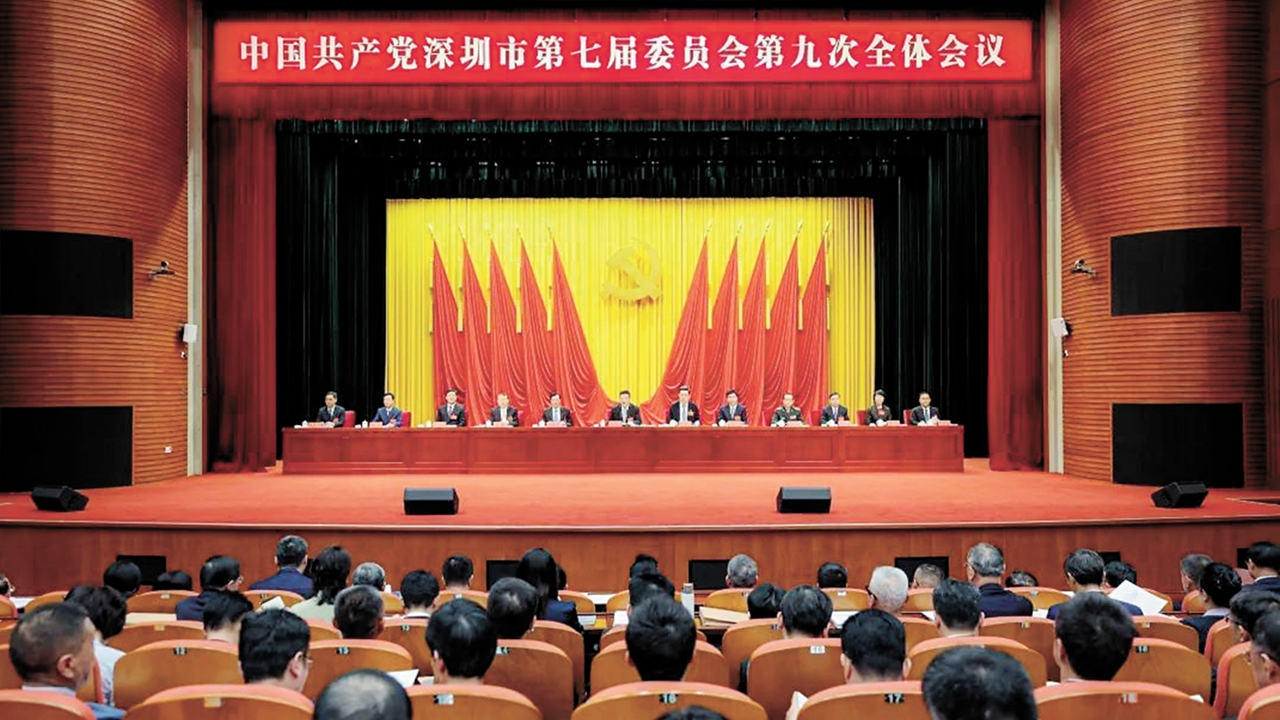
The 9th Plenary Session of the 7th Shenzhen Municipal Committee of the Communist Party of China, which was held Sept. 20, 2024. Photo by He Long
Pilot comprehensive reform measures
On Dec. 31, 2024, the National Development and Reform Commission (NDRC) released a notice on promoting and drawing on the innovative measures and typical experiences of the pilot comprehensive reform measures of Shanghai’s Pudong New Area, Shenzhen, and Xiamen. Eight typical experiences from Shenzhen were promoted nationwide.
For the third consecutive year, following 2022 and 2023, the NDRC has highlighted Shenzhen’s innovative measures and exemplary practices. This has elevated the tally of the city’s pioneering comprehensive reform initiatives, which are being advocated across the nation, to a total of 48.
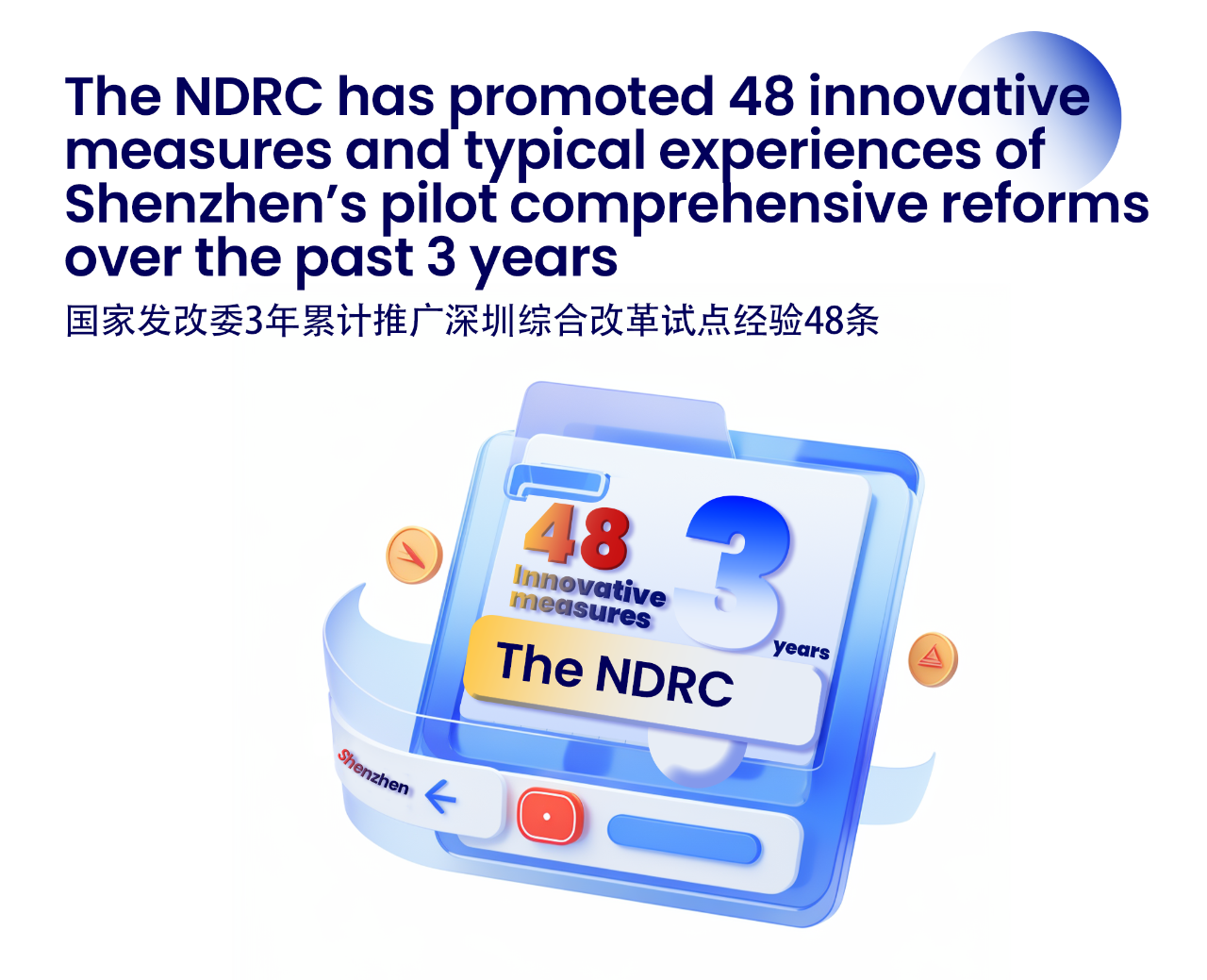
The “Qianhai Plan”
Shenzhen has unveiled a targeted promotion plan and a three-year action plan for the implementation of the “Overall Development Plan for the Qianhai Shenzhen-Hong Kong Modern Service Industry Cooperation Zone.” Over 90% of the tasks outlined in the “Plan for Comprehensively Deepening Reform and Opening Up of the Qianhai Shenzhen-Hong Kong Modern Service Industry Cooperation Zone” were successfully carried out.
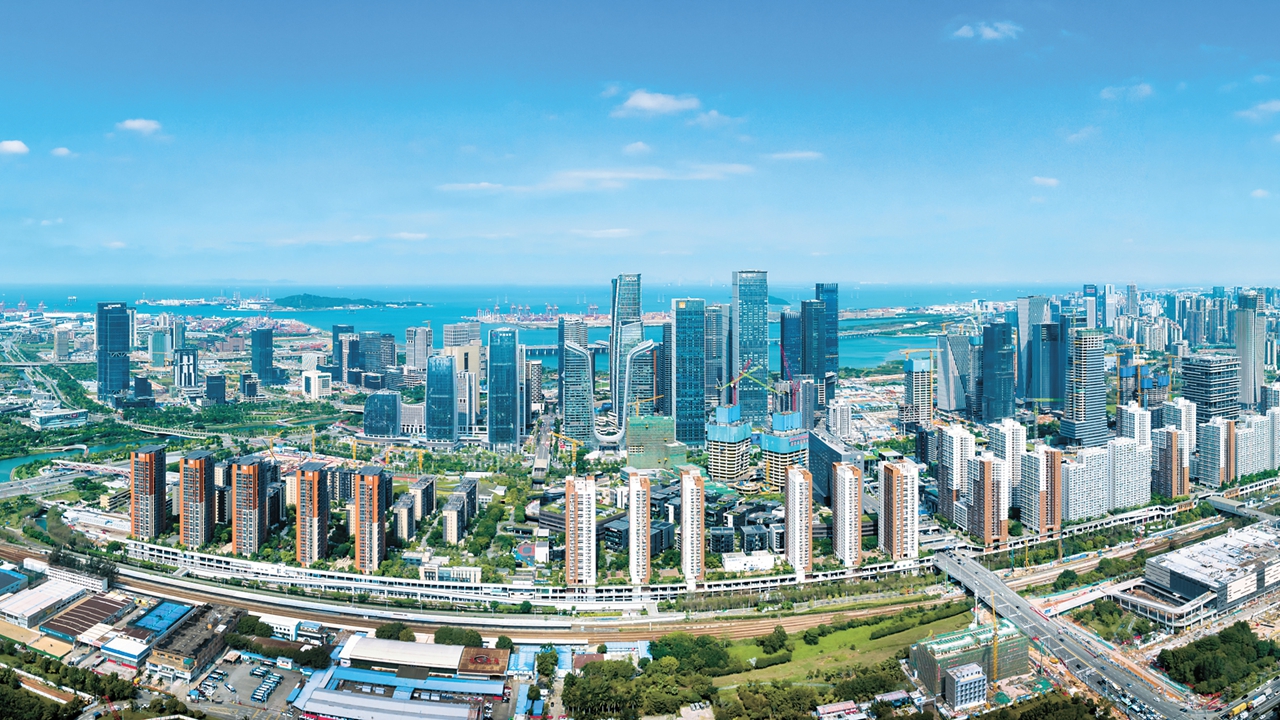
An aerial view of the Qianhai Shenzhen-Hong Kong Modern Service Industry Cooperation Zone. File photo
A preferential 15% corporate income tax policy has been expanded to encompass the entire Qianhai cooperation zone, and Hong Kong residents working within Qianhai are now exempt from personal income taxes that exceed their Hong Kong tax liability.
In a provincial first, a joint venture office between Chinese and foreign law firms was established, bringing the total number of Guangdong-Hong Kong-Macao joint venture law firms and foreign law firm representative offices to 11 and five, respectively. The Shenzhen Court of International Arbitration accepted cases from 142 countries and regions.

The Qianhai Hong Kong-Macao e-Services Station has provided 368 cross-border government services to investors from Hong Kong and Macao. Shenzhen is advancing the strategy to enhance free trade zones, achieving improvements in domains such as investment convenience, trade freedom, and post-border reforms. Qianhai has contributed an additional 14 institutional innovations that can be replicated and promoted nationwide, bringing the cumulative total to 102.
Cross-border flow of innovative elements
Shenzhen has thoroughly implemented the State Council’s “Development Plan for the Shenzhen Park of the Hetao Shenzhen-Hong Kong Science and Technology Innovation Cooperation Zone,” established the Hetao Development Authority, and issued the legal framework for the Shenzhen Park.
The city has enacted “Double 15%” preferential tax policies for both corporate income tax and personal income tax for eligible entities, launched over 200 high-end scientific research projects, and attracted a total of 16 esteemed domestic and international academicians and experts, as well as 15,000 exceptional scientific research professionals.

An aerial view of the Hetao Shenzhen-Hong Kong Science and Technology Innovation Cooperation Zone. Photo from the Hetao Development Authority
Shenzhen has also assumed provincial-level management responsibilities for the entry and exit of Hong Kong-registered vehicles from research institutions via the “No.1 Channel” in the Hetao Shenzhen Park. This initiative allows researchers to commute across borders with ease, either by driving their own cars or utilizing cross-border buses.
Additionally, the city has implemented 10 customs clearance facilitation measures, including centralized declaration of scientific research goods, to enhance the efficient flow of research materials across borders.
Shenzhen has signed the first Hetao cross-border dual-currency early-stage fund of funds. A pilot cross-border investment and financing facilitation program has been successfully replicated and expanded across 16 regions nationwide.
The Hong Kong SAR Government has issued the “Development Outline for the Hong Kong Park of the Hetao Shenzhen-Hong Kong Science and Technology Innovation Cooperation Zone,” thereby completing the strategic jigsaw puzzle of the “one zone, two parks” development plan for the Hetao cooperation zone and realizing strategic synergy between the regions.
R&D investment
In 2024, Shenzhen’s total R&D investment soared to 223.661 billion yuan (US$30.5 billion), which constituted 6.46% of the city’s GDP. Notably, corporate R&D investment dominated this figure, accounting for a staggering 93.3% of the total. Shenzhen secured the top spot among Chinese cities in terms of R&D investment.
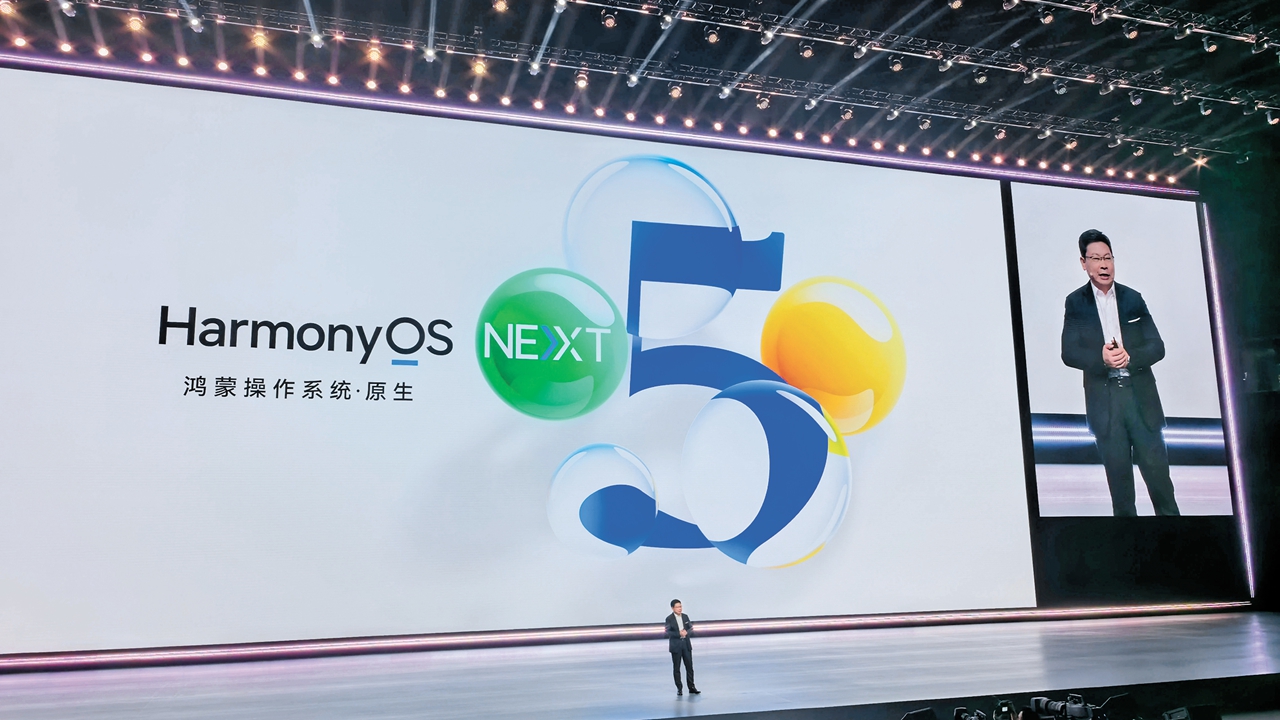
The launch ceremony of the HarmonyOS Next in Shenzhen on Oct. 22, 2024. Photos by Xinhua unless otherwise stated
Shenzhen has enhanced the management framework for developing innovation platforms. The Pengcheng Laboratory has achieved significant milestones in the realm of integrated computing power networks. The national third-generation semiconductor comprehensive platform pilot line in Shenzhen has been successfully completed and is now operational.
The Guangdong-Hong Kong-Macao Greater Bay Area National Technology Innovation Center has been strategically positioned in Hetao. Additionally, the Shenzhen Medical Academy of Research and Translation and the Shenzhen Bay Laboratory have made strides towards integrated development.
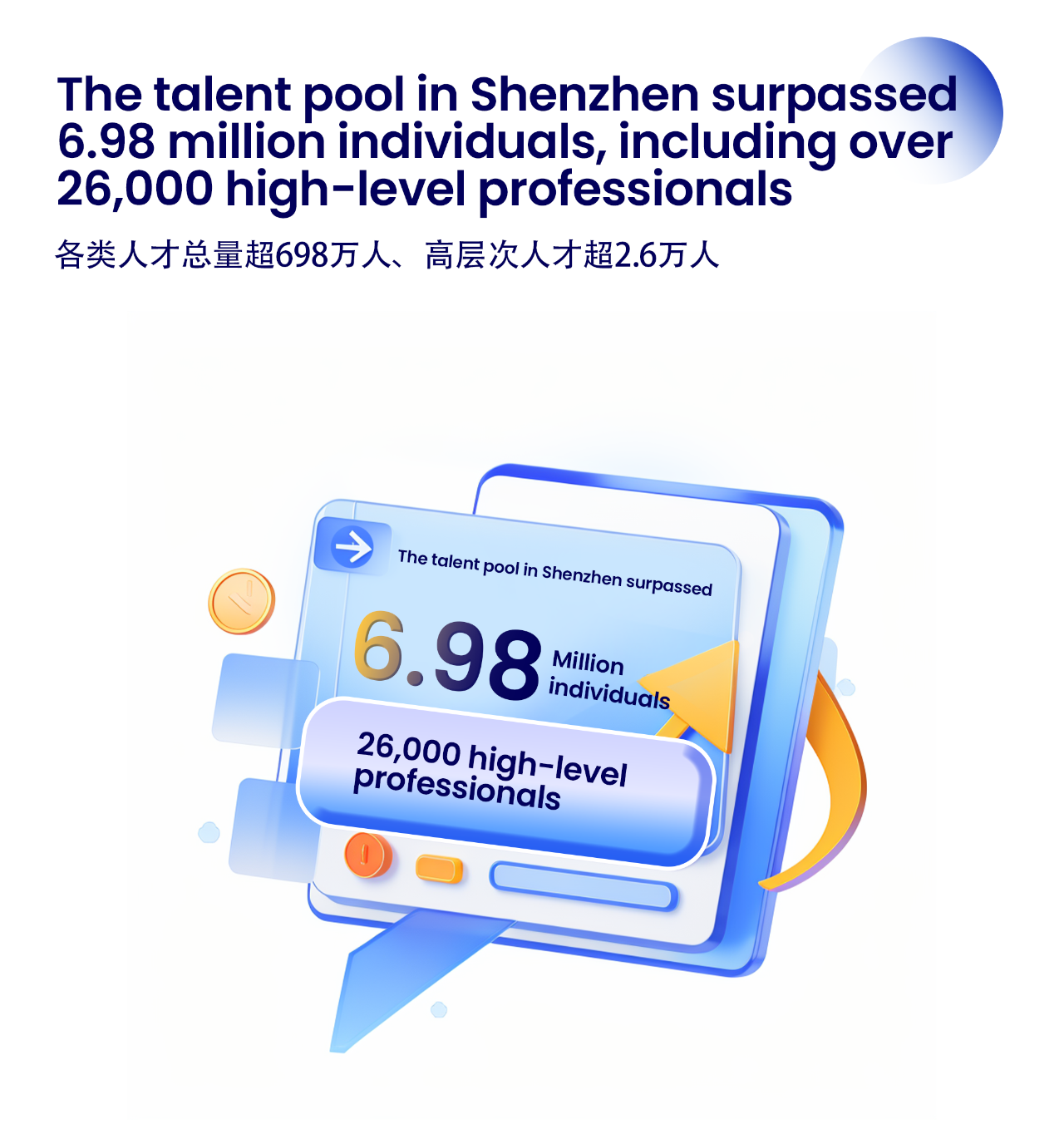
The Shenzhen University of Advanced Technology received approval to begin student enrollment, and the establishment of the Shenzhen Ocean University has been approved. The city’s higher education institutions have expanded their global footprint by adding 16 disciplines that rank within the top 1% of the Essential Science Indicators list and four disciplines that are within the top 0.1% worldwide. The talent pool in Shenzhen surpassed 6.98 million individuals, including over 26,000 high-level professionals.
Industrial output
New energy vehicle (NEV) production in Shenzhen is poised to surpass 2.8 million units in 2024, with BYD becoming the world’s first automaker to reach the landmark production of 10 million NEVs.

A Denza D9, BYD’s 10-millionth new energy vehicle, is rolled out in the company’s production base in Xiaomo Township, Shenzhen, on Nov. 18. Photo by Zou Yuan
The city’s total output value of industrial enterprises above the designated size is projected to exceed 5 trillion yuan, while the total industrial added value is anticipated to surpass 1.2 trillion yuan. Shenzhen is expected to maintain its “double first” status among national cities for three years running. The added value of strategic emerging industries is expected to constitute nearly 45% of the city’s GDP.
Shenzhen has added 29 national-level manufacturing champion enterprises and 296 national-level “little giant” enterprises, securing the top position among cities across China.
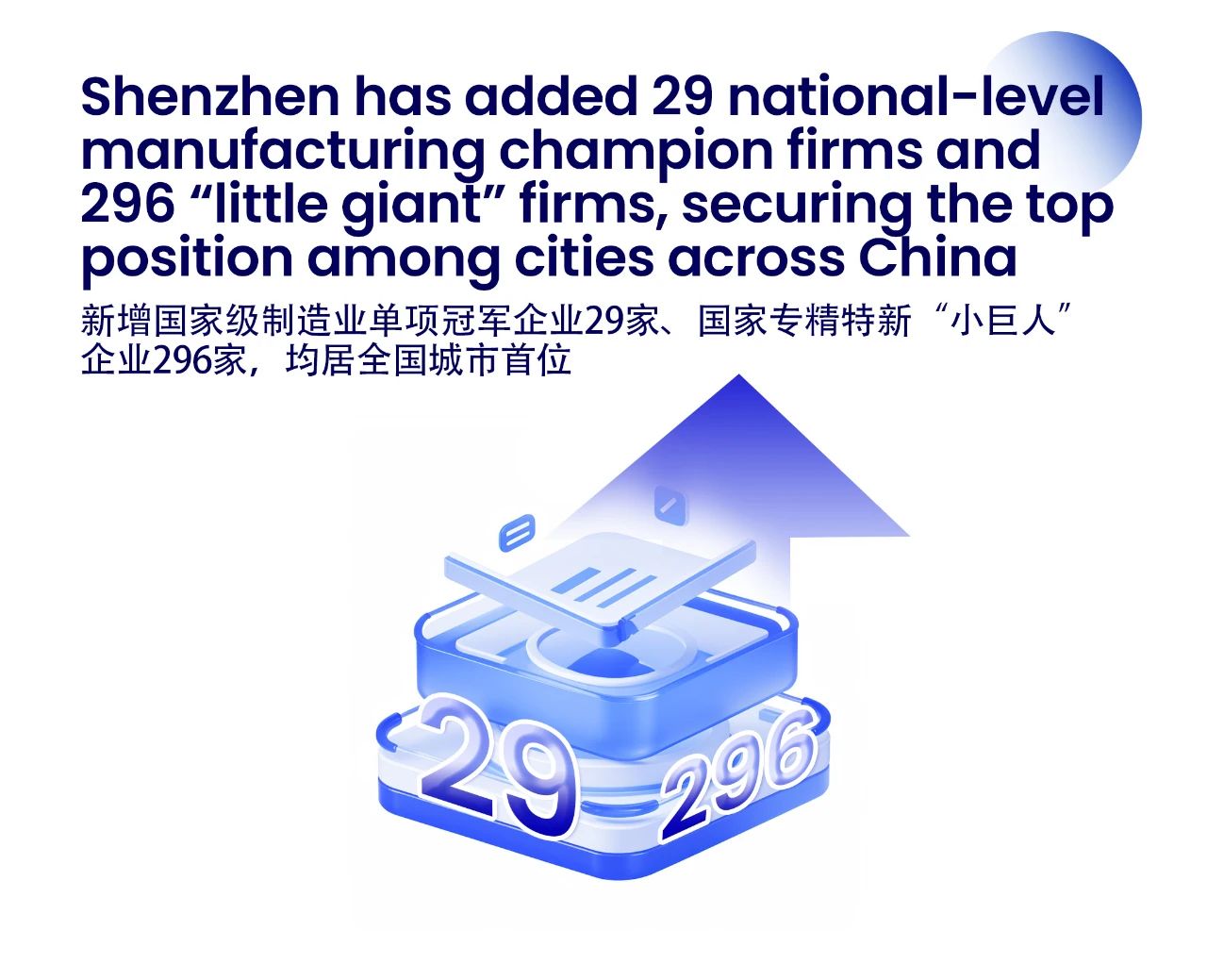
Total imports and exports
From January through November, Shenzhen’s total import and export volume in foreign trade surged to a record-breaking 4.1 trillion yuan, marking a monumental milestone. Notably, the city’s total export volume is poised to maintain its leading position among mainland cities for an impressive 32nd consecutive year.
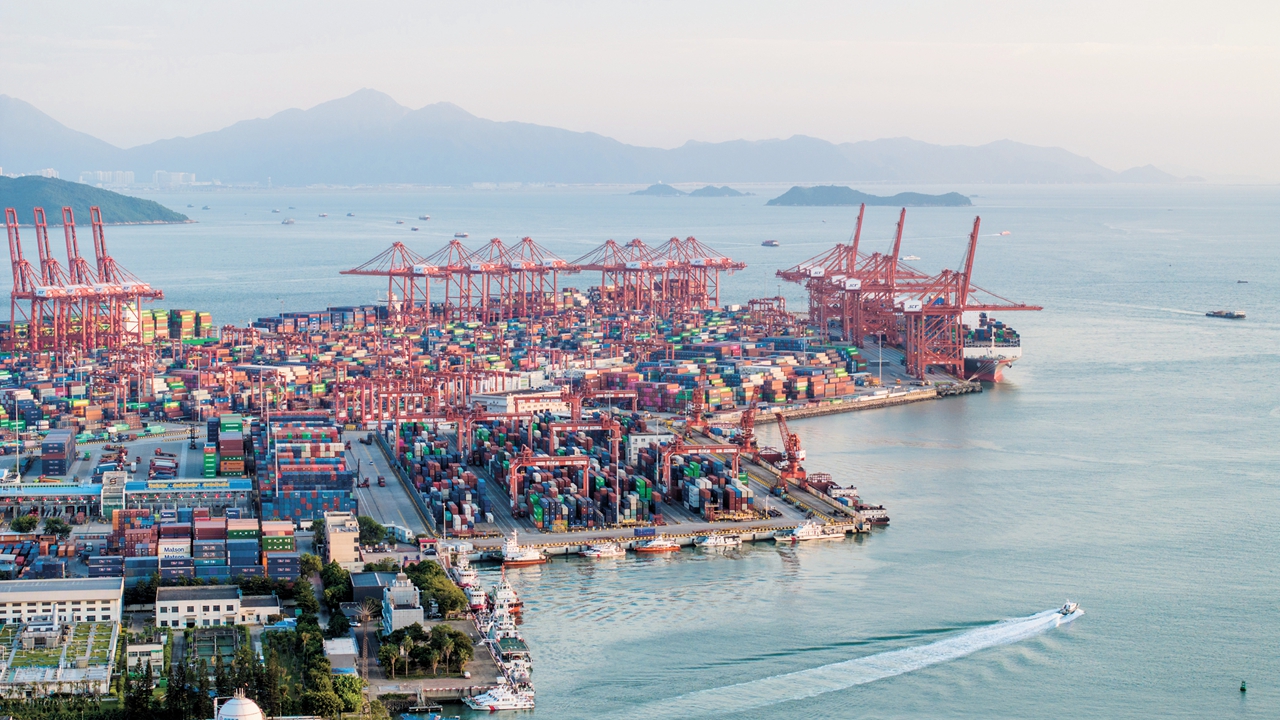
An aerial view of Shekou Port.
The Qianhai Mercantile Exchange reported an annual transaction volume of 104.71 billion yuan, with the RMB cross-border settlement amount reaching 50.81 billion yuan — a remarkable year-on-year increase of 150.2%. This achievement placed the exchange at the forefront among comparable platforms, ranking first in its category.
AI empowerment
Shenzhen has introduced a suite of policy documents and measures aimed at establishing itself as a pioneering city in the field of artificial intelligence (AI). The city is implementing the “AI+” action plan and supported nearly 200 “city+AI” scenarios, fostering the application of AI across diverse industries and in household settings.
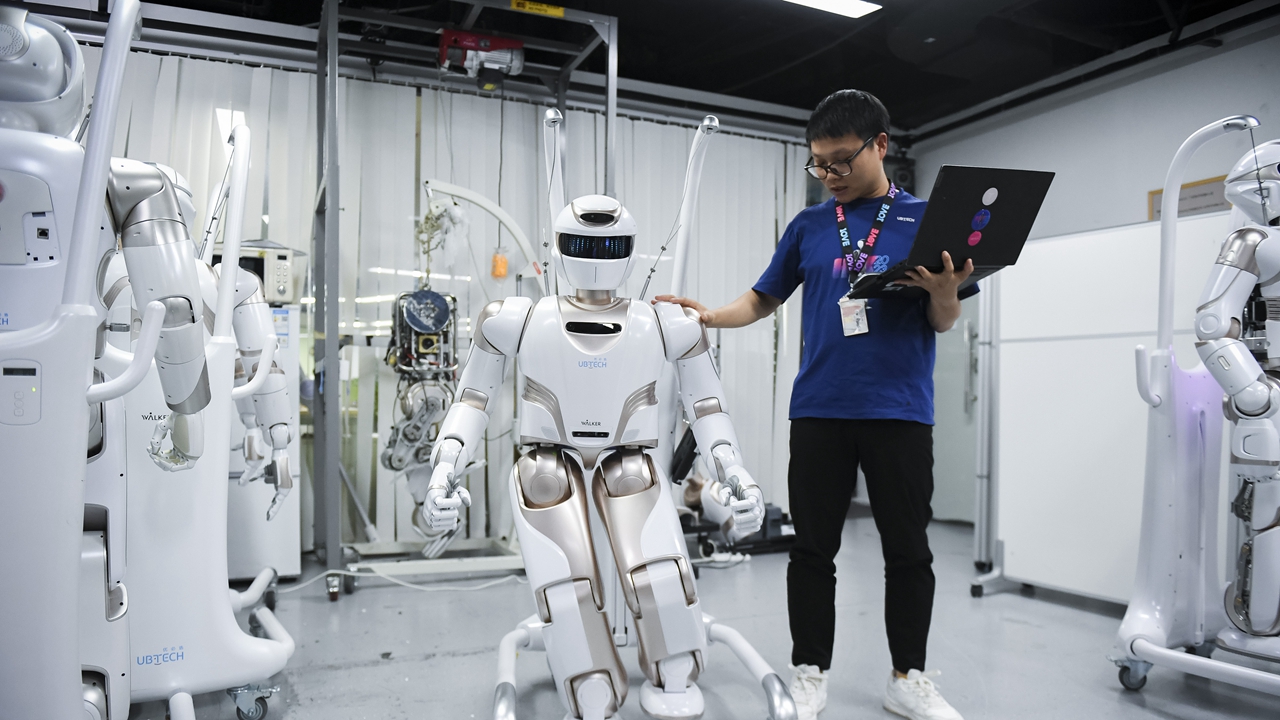
A UBTECH employee tests the Shenzhen company’s Walker X robot June 26, 2024.
Shenzhen has completed the nation’s first incremental pre-training of a large model in the judicial trial vertical field. The city is at the forefront of developing and applying an AI-assisted trial system, which optimizes the work mechanism for trial supervision and management. This innovation has led to a significant reduction in the average closing time of civil and commercial cases by 38 days, a development that has garnered full recognition from the Supreme People’s Court.
Intl. hospital accreditation standards
The International Hospital Quality Accreditation Standards, compiled by the Shenzhen Hospital Accreditation Research Center, received high scores in an authoritative certification by the International Society for Quality in Health Care External Evaluation Association and became the first internationally certified hospital accreditation standards in China.
At present, the standards have been supported by four internationally renowned commercial insurers, and have been evaluated in more than 30 hospitals, including those in Beijing and other places. The first batch of four hospitals, including Pamela Youde Nethersole Eastern Hospital in Hong Kong, have obtained accreditation
Entry and exit
Shenzhen has adopted a 240-hour visa-free policy for overseas travelers at 11 of its checkpoints. The Shenzhen Bay Checkpoint has introduced a card-free express border inspection channel for a smoother border experience. The airport has implemented convenient measures such as exempting 24-hour direct transit passengers from border inspection procedures. Additionally, the Wenjindu Checkpoint has piloted a departure tax refund scheme.
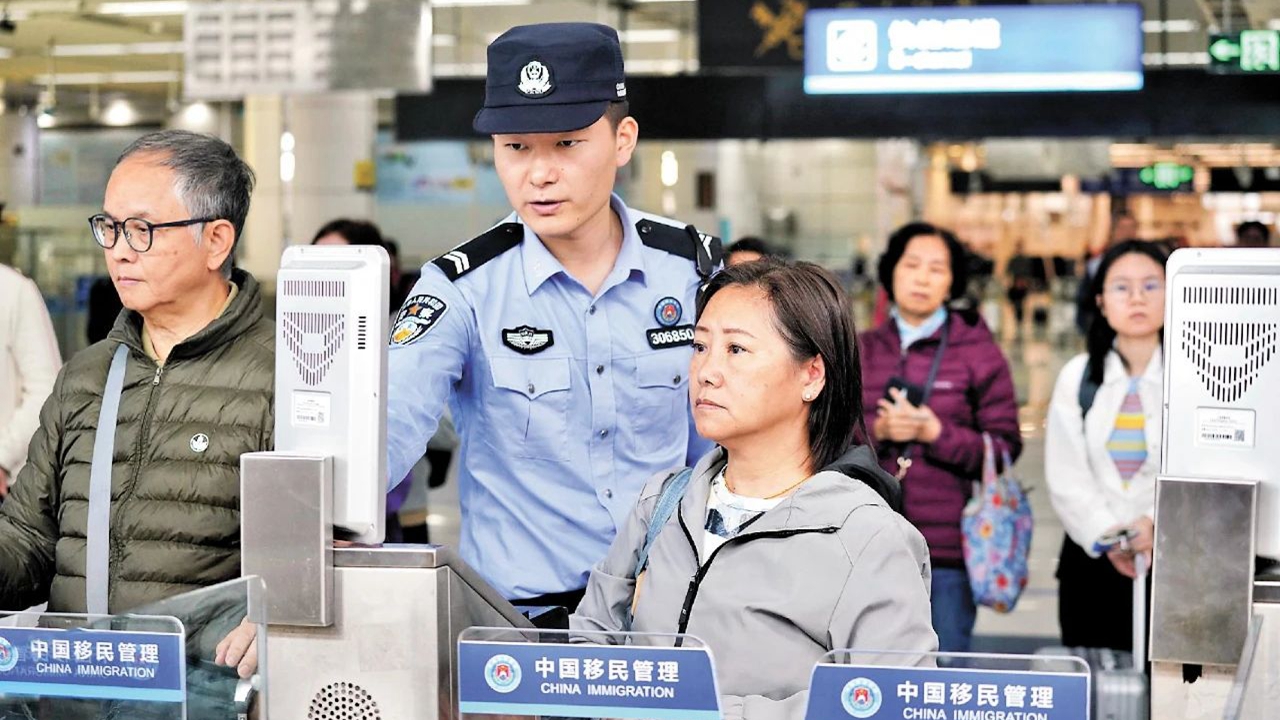
An officer helps a passenger use the newly introduced card-free express border inspection channel at the Shenzhen Bay Checkpoint in November 2024. Photo from Shenzhen Economic Daily
The number of entry-exit individuals at Shenzhen checkpoints, as well as the number of foreign entry-exit individuals, has reached 240 million and 5.4 million, respectively, both setting new records since the full resumption of customs operations. Moreover, the passenger throughput at the Shenzhen Bao’an International Airport has reached an all-time high of 61.476 million.
Shenzhen has established a payment demonstration zone dedicated to offering seamless and convenient payment experiences for consumers worldwide. In the first 11 months of 2024, non-cash payment transactions conducted by overseas individuals in Shenzhen totaled 17.87 billion yuan, marking a substantial year-on-year increase of 78%. Projections indicate that by the end of the year, the total value of these transactions will surpass 20 billion yuan.
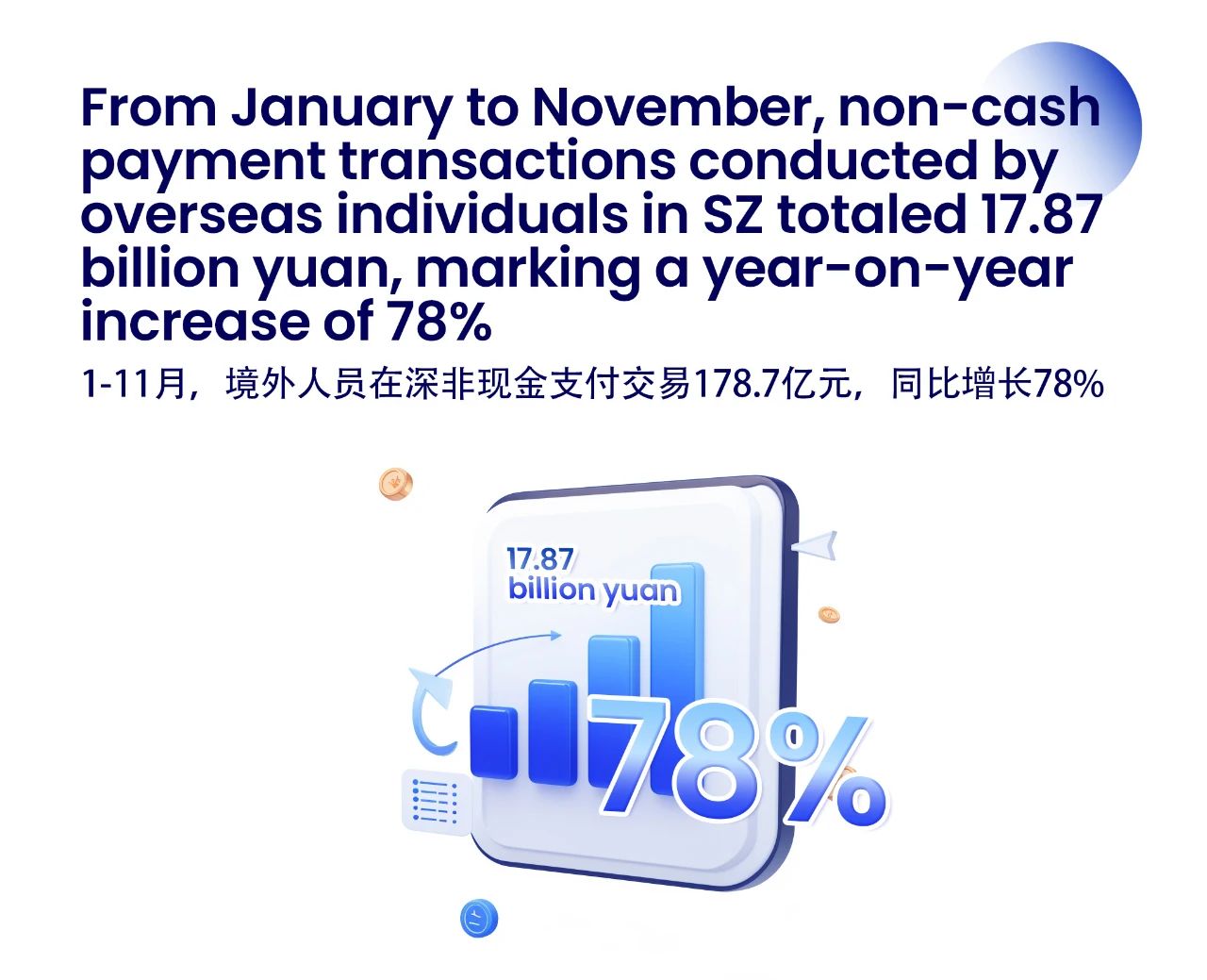
Regional coordinated development
On June 30, 2024, the Shenzhen-Zhongshan Link officially opened to the public, cutting the travel time between Shenzhen and Zhongshan to a mere 30 minutes. Since opening, the link has operated at full capacity, with the total number of trips surpassing 15 million. It has emerged as a “new artery” facilitating the in-depth integration and growth of the Guangdong-Hong Kong-Macao Greater Bay Area.
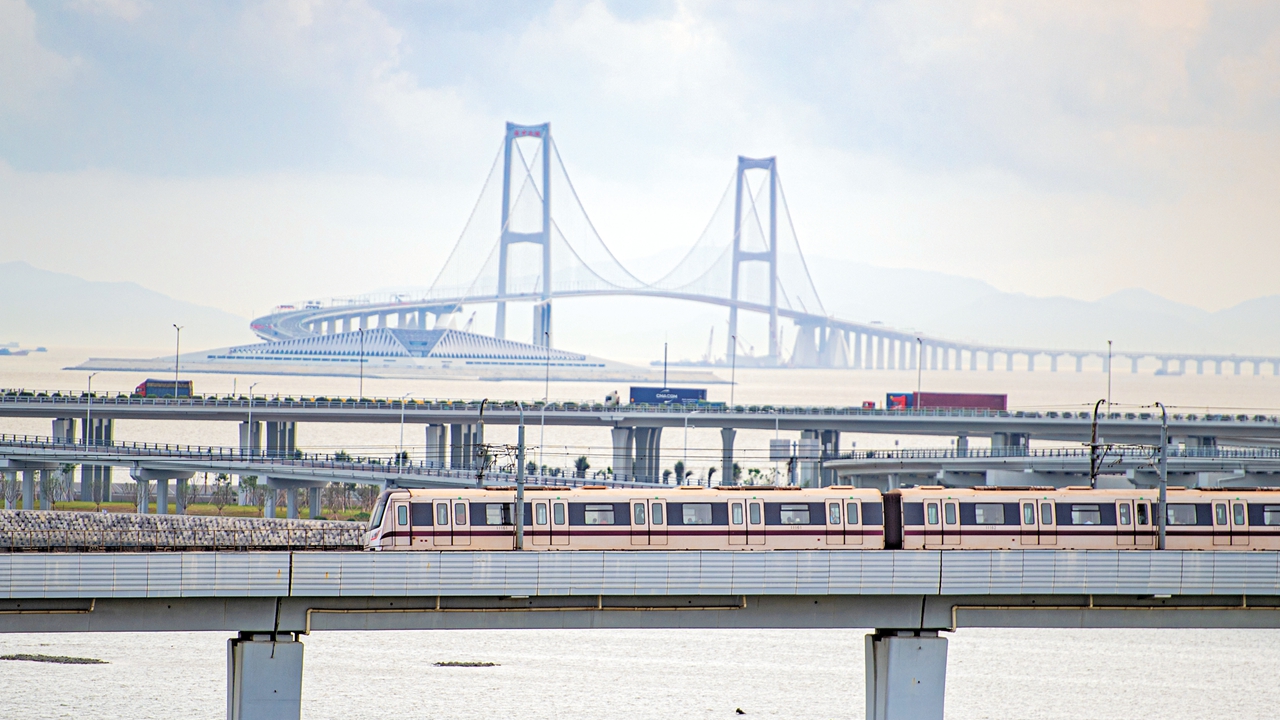
The Shenzhen-Zhongshan Link is seen in the distance.
Basic education
Shenzhen has been steadfast in expanding its inclusive preschool education resources, resulting in a significant increase in the proportion of children attending inclusive kindergartens to 92.3%. Compulsory education schools have implemented a “one PE class a day” policy and have widely introduced AI courses. Additionally, 100 schools have initiated a pilot “half-day plan per week” program, which allows students to step out of the classroom to read and explore.
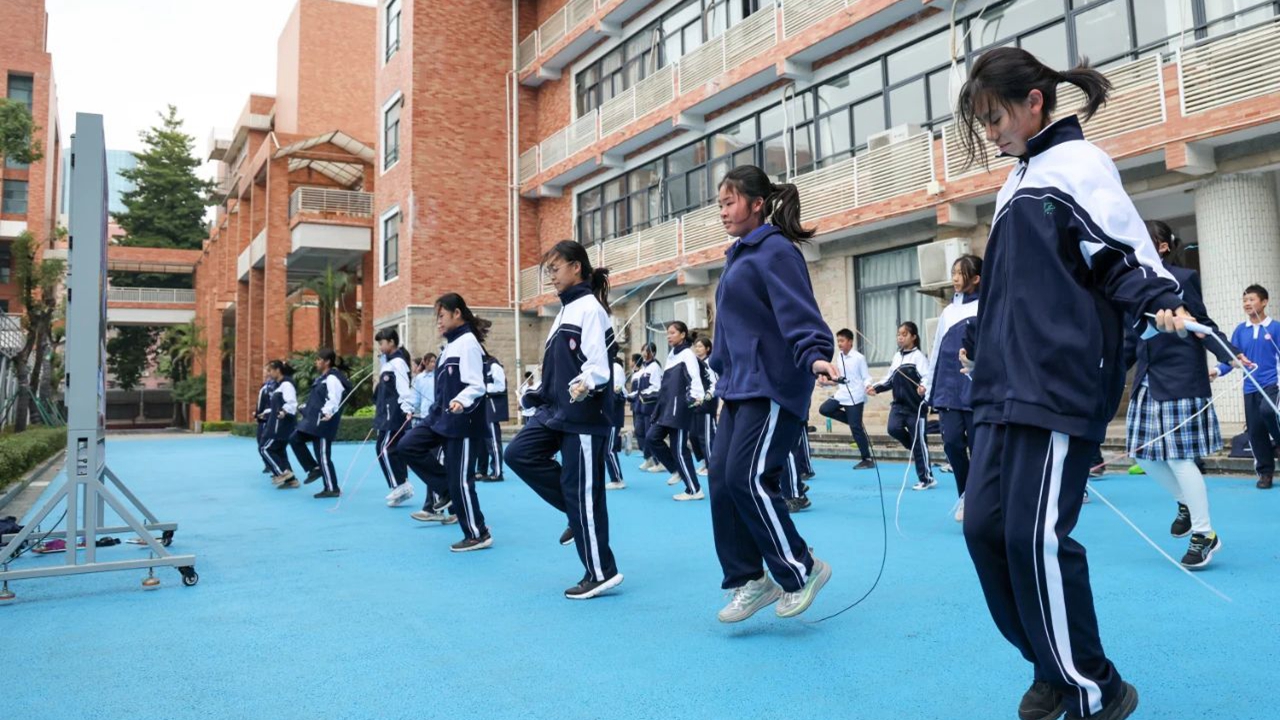
Students do rope skipping during their PE class at the Affiliated High School of Shenzhen University on Dec. 23, 2024.
Throughout 2024, the city added 180,000 new seats in basic education, bringing the total number of school seats added since 2020 to 824,000, which placed Shenzhen at the forefront of Chinese cities in terms of educational expansion.
Medical services
The city has seen an increase in the number of top-tier hospitals and national key clinical specialties, with totals reaching 33 and 29, respectively. The “15-minute community health circle” network has continued to enhance its services, with 86.1% of hypertension patients and 76.6% of diabetes patients now seeking care at community health facilities.
The city has further solidified the rare disease medication guarantee mechanism through the integration of “basic medical insurance, major illness insurance, and Shenzhen Huimin insurance” while also advancing the pilot reform of medical service pricing.
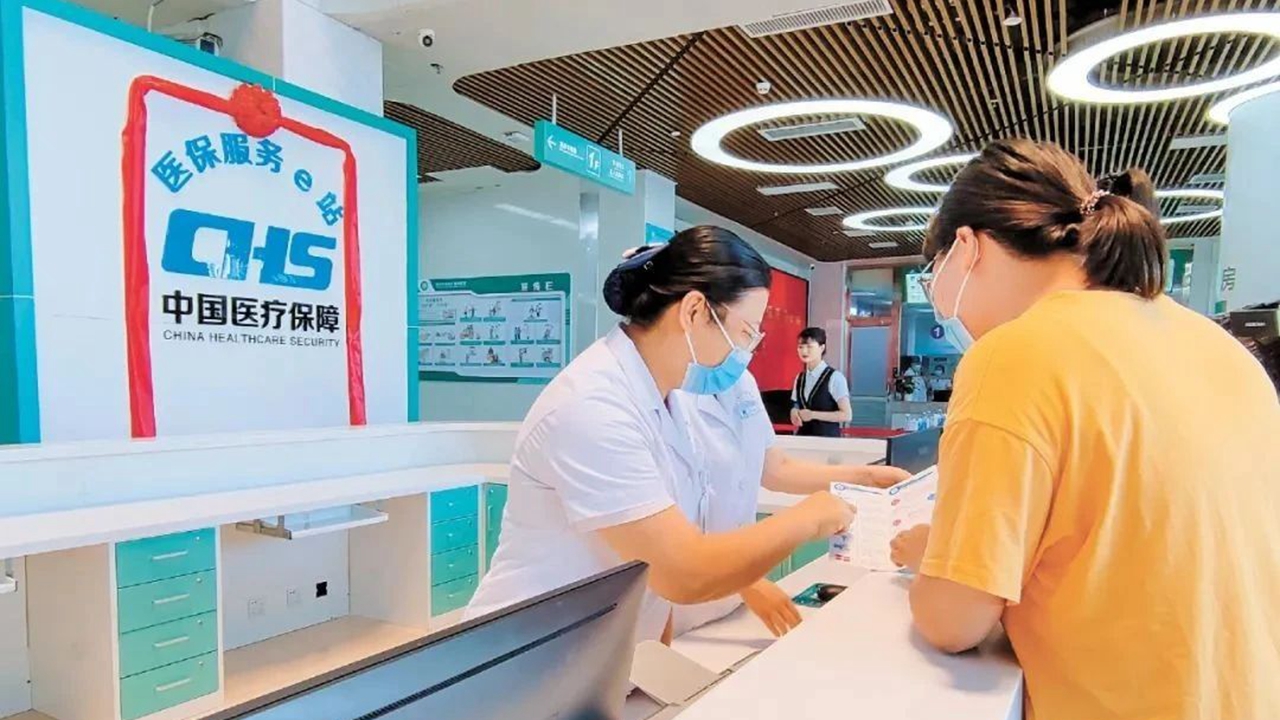
A staffer responds to a patient at a medical insurance service station in a Longgang hospital. Photo by Cheng Wenli
Additionally, six new medical institutions have joined the “Hong Kong and Macao Medicine and Equipment Connect” initiative, increasing the total to 10. The scope of approved medicines and medical devices has expanded to 59, and a pilot program for direct cross-boundary ambulance transfers between Guangdong and Hong Kong has been initiated.
Business environment
Shenzhen has made it possible for overseas investors to easily complete business registration online. The city has also piloted relaxed market access in sectors such as value-added telecommunications and foreign-funded hospitals.
In 2024, Shenzhen saw the establishment of 562,000 new business entities, bringing the total number of registered business entities to 4.4 million. The city remained in first place among Chinese cities in terms of business registration.
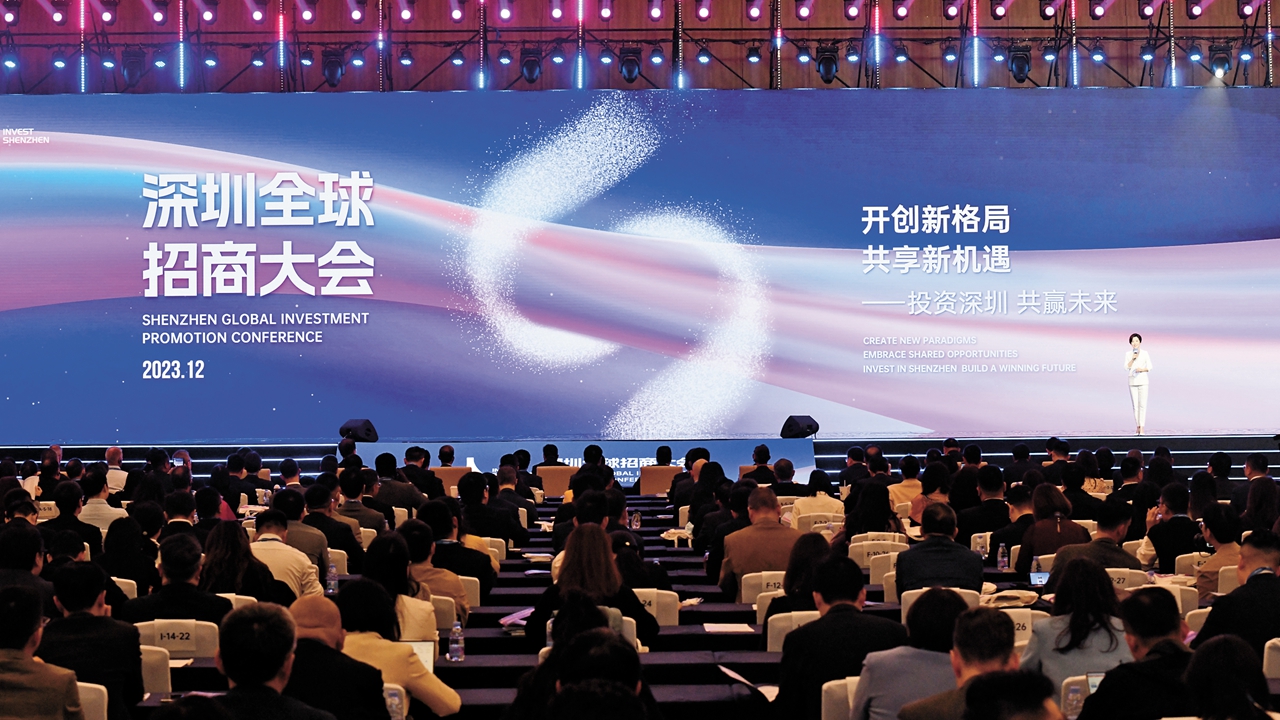
The 2024 Shenzhen Global Investment Promotion Conference. Photo by He Long
Grassroots governance
Shenzhen has pioneered innovative approaches to Party building, guiding the development of modern and vibrant communities across nearly 5,000 residential areas in the city. Shenzhen has carried out service reforms led by Party building to address the needs of the people. It has launched eight application scenarios for large models, which cut the average processing time for addressing requests by 15% compared to the previous year.
Read more “2024 in Review” stories:
2024 in Review ① | Shenzhen's opening up 回望2024·深圳开放大事